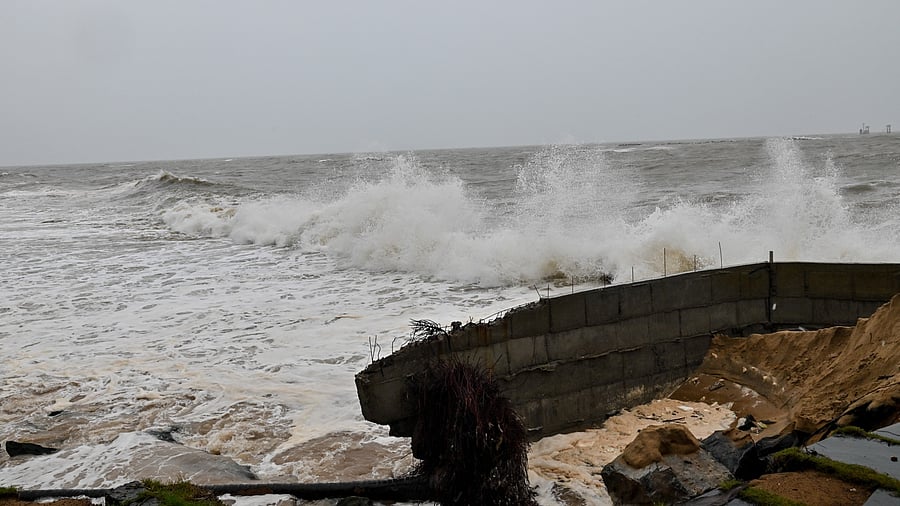
Environmental groups have cited India Development Report, which identified 113 coastal cities across nine States as being at risk of submergence by 2050 due to rising sea levels.
Credit: DH File Photo
Navi Mumbai: Environmental groups have sounded the alarm over a proposal by a government panel to reduce the Coastal Regulation Zone (CRZ) buffer from 500 metres to 200 metres from the High Tide Line (HTL), calling it a “disastrous and short-sighted” move that would endanger India’s already fragile shorelines.
In an appeal to Prime Minister Narendra Modi, city-based advocacy groups NatConnect Foundation and Sagar Shakti urged the Centre to reject the recommendation of a committee headed by NITI Aayog member Rajiv Gauba, which reportedly described the existing 500-m CRZ restriction as “overly restrictive” and detrimental to coastal tourism, fishing enterprises, and infrastructure development.
“At a time when the world is bracing for rising sea levels, India’s planners seem to be suggesting the exact opposite — moving closer to the sea instead of staying away,” said B N Kumar, director, NatConnect Foundation.
Kumar cited the India Development Report, which identified 113 coastal cities across nine States as being at risk of submergence by 2050 due to rising sea levels. “Even with the current CRZ norms already diluted to allow development up to 100 metres from creeks, estuaries and backwaters, further relaxation is unimaginable,” he warned.
The green activists said that NASA satellite data has recorded a global sea-level rise of 3.6 inches (91 mm) since 1993, with melting ice and warming oceans accelerating the threat. “Local impacts may be even more severe due to land subsidence and changing ocean currents,” the space agency has reported.
Sagar Shakti director Nandakumar Pawar argued that genuine fishing community needs — such as floating jetties or boat anchoring facilities — can be addressed through localised measures without altering the overall 500-m protection zone.
“Under the guise of helping fisherfolk, the CRZ policy is sought to be diluted to allow rampant construction. This will destroy both the coasts and the sensitive ecology that sustains them,” Pawar cautioned.
He also noted that government data presented in Parliament in June 2024 revealed that nearly 24% of the Karnataka coastline is eroding, while national figures from the National Centre for Coastal Research showed 33.6% of India’s coastline is vulnerable to erosion.
“Instead of planning more construction closer to the sea, we should be investing in mitigation and disaster management,” Pawar added.
The environmentalists also hit out at another proposal from the NITI Aayog panel — to reduce mandatory green cover for industries from 33% to 10% — arguing that it will worsen pollution and public health risks.
“Have we already forgotten the oxygen crisis during the Covid-19 years?” Pawar asked. “At a time when we should be expanding our green lungs, it’s shocking that policymakers are toying with the idea of cutting them down.”
Both groups have urged the Prime Minister to hold wide-ranging consultations with coastal communities and environmental experts before taking any decision that could irreversibly damage India’s shores.
“Coastal regulation is not a bureaucratic hurdle,” Kumar said. “It is our last line of defence against climate catastrophe.”